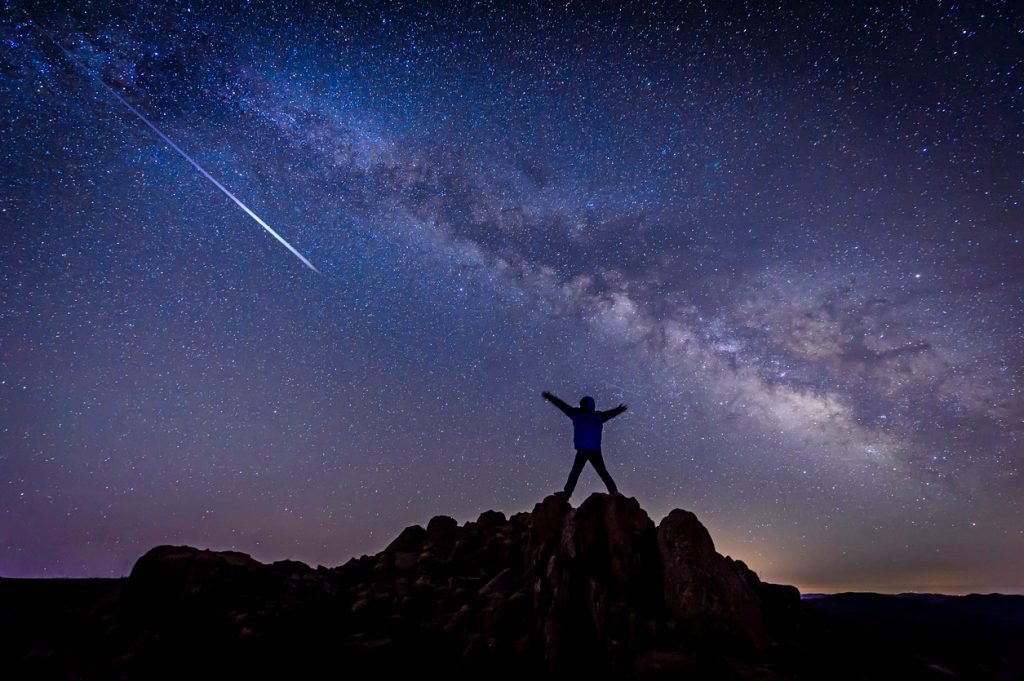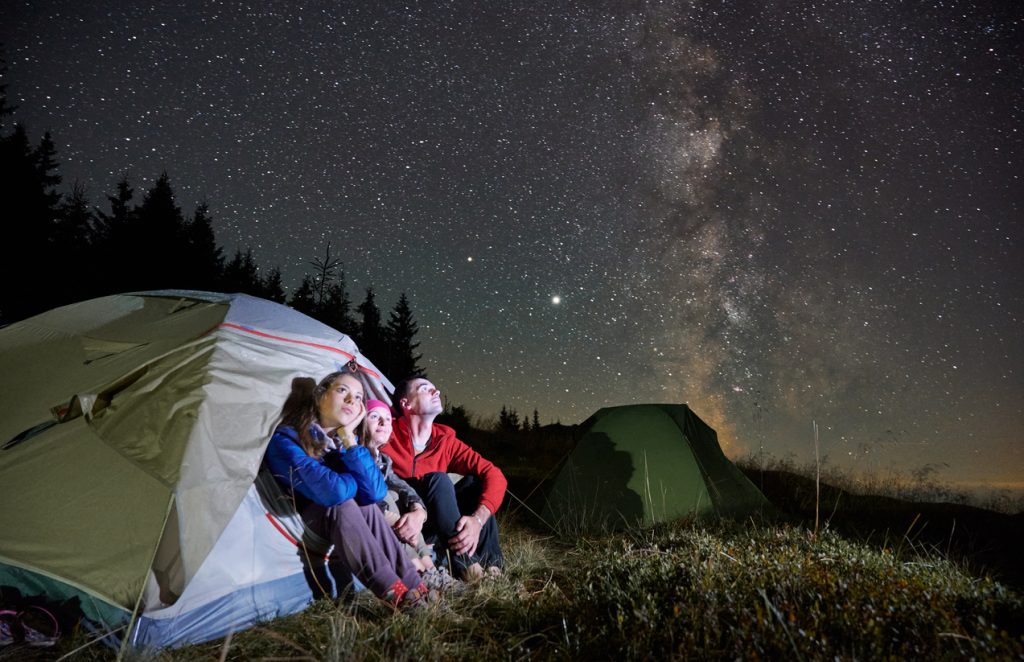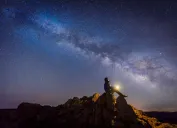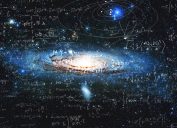New Meteor Shower Will Create "Halloween Fireballs" in the Sky—How to See It
Astronomers say the dazzling display is actually the overlap of two showers.

Even though the weather is getting cooler, fall evenings can make it easier to get in some good stargazing as the sun dips below the horizon earlier each day. And while there's plenty to see on any given night, there are some annual spectacles that can be worth stepping outside to see that don't even require a telescope or binoculars. This includes a meteor shower that coincides with one of the biggest autumn holidays and can create "Halloween fireballs" in the sky. Read on to learn how to see them for yourself, and when you'll need to head outdoors.
RELATED: Southwest Says You Can View the Total Solar Eclipse on These 8 Flights.
The Taurid meteor shower will create "Halloween fireballs" over the next few weeks.

Halloween arguably creates one of the biggest spectacles of any holiday, thanks in no small part to the festive decorations and creative costumes that define it. But thanks to the Taurid meteor shower, you can also expect a seasonal display in the night sky over the coming weeks, according to astronomy website EarthSky.
Like other meteor showers, the annual autumnal spectacle is created by Earth's passage through the dust and debris trails left behind by a passing comet. In this case, the source is Comet Encke, which orbits the sun roughly every 3.3 years, according to NASA. Because of their timing and the larger particles that make up its dust cloud, the spectacle has also earned the nickname of "Halloween fireballs" because of the way they light up the sky in brilliant flashes.
RELATED: 6 Stargazing Secrets, According to Astronomy Experts.
This event is technically the overlap of two separate meteor showers.

Even though they aren't quite a household name, the annual event is technically made up of two separate meteor showers that overlap. The South Taurids first became visible around Sept. 23 and will run for several more weeks through about Nov. 12. The North Taurids began later on Oct. 13 and will continue through roughly Dec. 2, EarthSky reports.
Astronomers point out that each shower tends to produce a relatively low number of visible meteors, with about five each per hour. But thanks to the long, drawn-out overlap between the two, they could produce an average of 10 fireballs per hour. This year, the South Taurids are expected to reach their peak on Nov. 6 before the North Taurids top out a week later on Nov. 13, per EarthSky.
RELATED: Intense Solar Storms May Peak Faster Than Expected—What That Means for Earth.
Astronomers say one night will be particularly good for viewing meteors.

While the Taurids' relatively long display window means you'll have plenty of opportunities to catch them, you still might want to mark one date off on your calendar. Astronomers point out that light from the waning crescent moon could drown out visibility during the South Taurids' peak, according to EarthSky. Fortunately, the North Taurids' peak will coincide with a new moon, creating much better conditions for spotting fireballs on Nov. 13.
Those hoping to get the best view will also want to make plans to stay up a little later than usual. The Taurids' radiant—or the place from which meteors appear to originate—will reach its highest point in the sky around midnight.
Of course, the moon isn't the only light source that can drown out "shooting stars." Make sure to pick a spot that's far away from bright city lights and provides an expansive view of the night sky to ensure you'll see as much as possible, EarthSky suggests.
RELATED: The 10 Best Destinations for Stargazing in the U.S.
The Taurids aren't the only thing worth checking out in the night sky this week.

If the potential for "Halloween fireballs" isn't enough to get you outdoors, there are still other points of interest in the night sky over the coming week.
The Orionid meteor shower is still taking place, expected to remain visible through Nov. 22 after having reached its peak on Oct. 22. The annual spectacle is known to create meteors with "glowing trains" that can last for several seconds or even minutes in the sky after they pass, according to NASA.
And on Nov. 2, we'll get our best view of our largest near neighbor when Jupiter reaches opposition, Forbes reports. The occasion marks when Earth finds itself between the gas giant and the sun in orbit, meaning it will be its brightest as a fully lit disk in the sky that will rise around sunset and sink below the horizon at sunrise. Perhaps most importantly, the spectacle will be easily visible to the naked eye and won't require a telescope or binoculars—although having them on hand can only improve your view.
RELATED: For more up-to-date information, sign up for our daily newsletter.





















